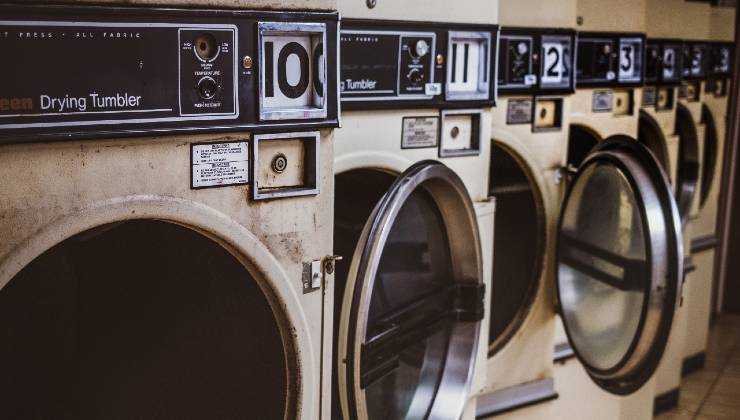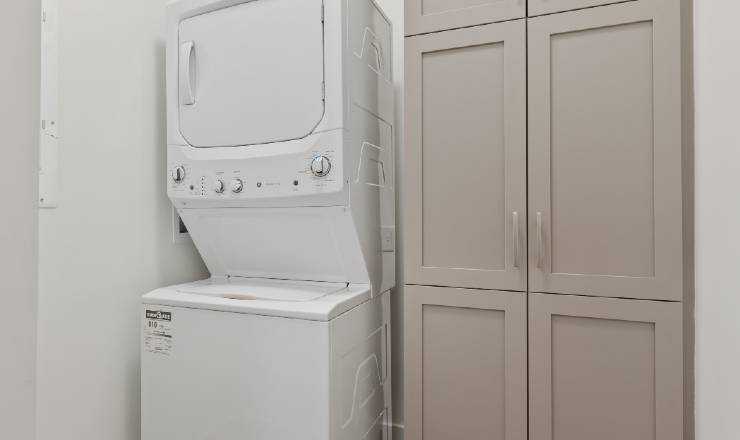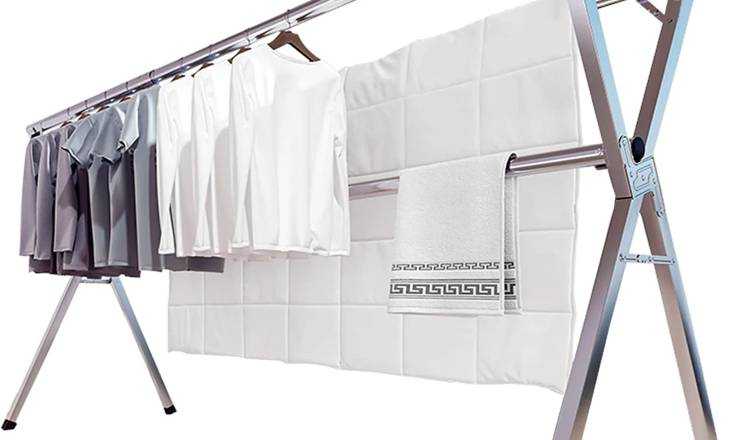Can I put my weighted blanket in the dryer?

When maintaining your weighted blanket, an essential decision you’ll face is whether to air dry or tumble dry it. Though both options possess advantages and drawbacks, the key factor in deciding which one works better for you lies in being aware of what type of material your weighted blanket has and how that affects its cleaning needs.
To ensure your weighted blanket stands the test of time, it is essential to care for it correctly based on its material and filling. This includes whether you have a cotton, polyester, minky, or bamboo fabric as well as which type of fillers like glass beads, plastic pellets or organic materials are used.
You may have learned that it is best to machine wash a weighted blanket in cold water and using mild detergent. Just like when washing, when it comes to dry a weighted blanket always refer to the care label, owner’s manual and/or manufacturer’s website for directions.
- https://balooliving.com/pages/care-use-instructions
- https://luxome.com/pages/care-instructions
- https://www.sleepfoundation.org
In this article, we will review the advantages and disadvantages of air drying versus tumble drying a weighted blanket, explore alternative methods for doing so, as well as provide useful tips to guide you in making an informed decision about how to dry your weighted blanket.
Drying a weighted blanket in a dryer vs air dry
For the best results and longevity, air drying is always encouraged for weighted blankets of over 20 lbs. Tumble dryers can be too rough on fabrics and fillings, potentially resulting in shrinkage or other damage along with accelerated wear-and-tear that could shorten its lifespan.
If you want to be gentle and safe with your weighted blanket, air drying is the way to go. This method permits the fabric of your blanket to dry gradually and evenly without any damaging exposure from intense heat or tumbling. It’s also a more sustainable approach since it doesn’t consume energy or emit greenhouse gases in comparison with other methods.
Using a tumble dryer, make sure to stick with the manufacturer’s instructions and select either no heat or low-temperature settings. To further protect your weighted blanket from potential harm, we suggest placing it in a laundry bag.
Alternatively, you may try to avoid to wash your weighted blanket too often by using a removable cover, duvet cover, or spot clean it when needed, instead of going through the whole chore of washing and drying the blanket.
Now let’s discuss both options discussed above in more detail.
Can you put a weighted blanket in the dryer?

Taking advantage of the convenience and speed that a dryer provides when drying off your weighted blanket is too compelling to ignore. Compared to air drying, which can take hours, you’ll see results much faster with a dryer - especially if it’s soaked or significantly damp.
If you’re short on time or need immediate access to its comforting hug again, utilizing this method is an absolute must.
Dryers are an ideal alternative for the ever-busy, who might lack either space or time to hang a blanket. Tossing it in the dryer is all that’s required – set the timer, and let technology do what it does best! This can be a real timesaver when you have other pressing tasks on your schedule -allowing you to invest your energy where it truly counts.
Not to mention, a dryer offers superior hygiene. By using this appliance, harmful germs that may have been lingering on the blanket are destroyed; especially beneficial if the bedding is used often or kept in moist conditions.
With its sanitizing properties and multiple user-friendliness, you can be sure your blankets remain hygienic for everyone (and their small or bigger pets) who use them.
The disadvantages of using a tumble dryer for weighed blankets
Utilizing a tumble dryer to dry your weighted blanket comes with considerable risks. The intense heat or tumbling capabilities of the machine could harm its construction, stuffing, and delicate material - resulting in early wear-and-tear and possibly making it completely unusable.
If you are determined to use a dryer, make sure that you read the manufacturer’s instructions carefully to reduce any chances of damage. It is also worth noting that king size weighted blankets or those heavier than 20-25 lbs may be too heavy for some machines, possibly resulting in destruction. Moreover, do not forget about energy consumption and its effect on our environment when using a dryer.
Tips for tumble drying your weighted blanket
- Tumble dry on a gentle cycle with low heat.
- To ensure even weight distribution and prevent any creasing that could occur in the spin cycle, experts recommend adding 2-3 dryer balls or tennis balls to your load.
- Do not put a weighted blanket that weights more than 20 lbs in a dryer
- Do not iron afterwards
Air drying your weighted blanket

Air drying is regularly thought to be the optimal way of drying a weighted blanket as it preserves delicate fabrics from harm or shrinking. In comparison to a dryer, which utilizes heat and tumbling, air drying solely depends on circulating air for removing moisture.
This renders much less potential for shrinkage or damage and ultimately decreases the probability of deteriorating your blanket in time.
Not only is air drying more economical and lightweight on your weighted blanket, but it’s also a considerably greener choice than using a dryer. In contrast, no energy or emissions are created with air drying—making it the most sustainable option for you and Mother Nature!
Tips for air drying a weighted blanket
We have to admit, air drying can take longer than using a dryer, and it requires some planning and preparation. Here are some tips for air drying a weighted blanket!
Drying rack

Investing in a heavy-duty drying rack is an invaluable decision if you plan to air-dry your weighted blanket regularly. Opt for stainless steel as it’s sturdy enough to accommodate the weight of the blanket without buckling or toppling over.
Additionally, flip over your piece now and then during its drying process; this will not only hasten it but also make sure that both sides are dried evenly.
The two-chair method

If investing in a drying rack isn’t an option, you can still successfully air dry your weighted blanket with the two-chair method. All you’ll need are two chairs with both back and seat support, spaced some distance apart.
Drape your blanket over their tops as if creating a kid’s play fort - the excess moisture will drip down to evaporate into the air! Placing towels or other absorbent materials beneath each chair may come in handy for capturing any water droplets.
Flat surface
An additional choice is to lay your weighted blanket over a flat space and let it dry. Floor tiles or even water-resistant laminated floors are perfect for this technique, particularly if you have an expansive room with great ventilation.
Towels and other materials that can easily soak up liquid should be placed beneath the blanket to protect it. Make sure you turn the blanket regularly so drying out is balanced throughout!
FAQs
How long does it take to dry a weighted blanket?
The time it requires for most weighted blankets to dry varies based on the method you opt for. Air drying is typically the slowest and most drawn-out approach, potentially taking several days to conclude. If tumble drying is your preferred option, expect it to take approximately a few hours as you’ll need to keep inspecting the cycle and redistributing it throughout that time. The speediest and least demanding alternative would be bringing the blanket over to a laundromat - this will likely only be an hour or so with same day collection available.
Conclusion
For those who wish to protect their weighted blanket’s quality and prevent shrinking or damaging certain fabrics, air drying is the best method. Not only that, but it’s also more sustainable than using a tumble dryer! If you don’t have access to a heavy-duty rack, you can use the two-chair technique or lay your weighted blanket on an absorbent surface such as towels. With these helpful tips in mind, you’ll be able to safely and effectively air-dry your weighted blanket!
